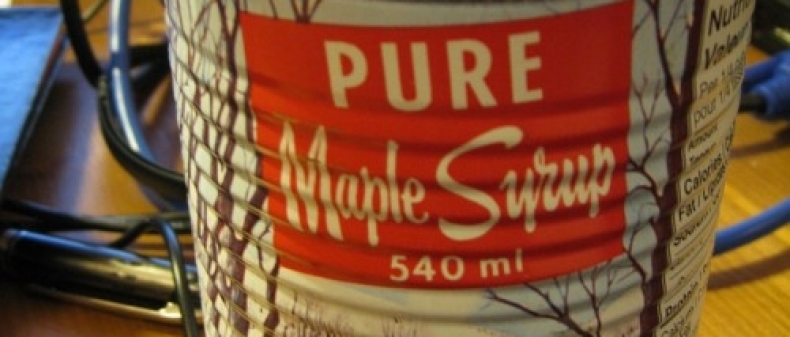
- Flickr user Kai Hendry
According to food historian Dorothy Duncan, many of today’s Canadian culinary traditions can be directly attributed to our ancestors. In her book, Canadians at Table: A Culinary History of Canada, she documents Canada’s culinary journey from Indigenous cuisine to early western settlers to today’s comfort foods.
We talk to Duncan about maple syrup, oranges and some of the other weird and wonderful cooking rituals that have shaped our culinary history.
What kind of culinary traditions have we inherited from our ancestors?Our ancestors influence our culinary traditions to a great extent in Canada, particularly when we celebrate special events, like birthdays, anniversaries, marriages and holy days. We still have birthday cake for our birthdays and we continue with the tradition of blowing out the candles and making a wish.
Many foods and ingredients are still believed to ward off evil, bring good luck or foretell the future. The ritual of throwing salt over one’s left shoulder after having spilt it, is just one example. It’s based on the idea that the devil approaches from the left, so if you throw it over your left shoulder you will get the salt straight into the eyes of the devil. Another example comes from Chinese immigrants. They will often have oranges at their weddings as a sign of good luck.
The arrival of new settlers to Canada in the 17th and 18th centuries had a profound effect on Canada’s food culture. How did these newcomers adapt to their new environment? Did they introduce any new ingredients to Canada?They brought their memories of ingredients and foods with them, but found that they needed to find substitutes for many of their recipes. Great Britons were used to drinking tea and coffee. They boiled various wild herbs to make tea and they used dried dandelion roots as a substitute for coffee. It may not have tasted the same for them but it was the best a substitute they could find. They used First Nations foods, such as pemmican (a highly nourishing blend of dried and powdered buffalo, elk, or deer meat that is mixed with dried berries and then sealed with grease), on a regular basis.
Maple syrup is a Canadian staple. How was it discovered and how did it become such an important ingredient for our country?
First Nations peoples have been tapping trees and using maple syrup for a long time. They believe that the syrup is a gift from the Sacred Mother and hold ceremonies of thanksgiving in the spring when it starts to flow.
For centuries before the arrival of newcomers Indigenous peoples were not only using it as a food and beverage, but using maple sugar as a barter item with other clans and nations. First Nations peoples taught the newcomers how to tap the trees and boil down the sap into syrup and eventually into sugar. For newcomers from Great Britain and Europe this would have been a great gift because they loved sugar and they would never have seen a sugar maple in their homelands. I think it has continued in popularity because of its flavour and versatility.
Did you come across any particularly unusual culinary traditions in your research for this book?
As I researched this book, I was impressed by the versatility of our ancestors, whether First Nation or newcomer, to survive in a landscape with a short growing season and a wildly fluctuating climate, and to find native plants that could not only be used for food and beverages, but for medicines as well.
What, for you, is a distinctly Canadian dish and why?
Bread is a Canadian dish – for Indigenous peoples it would have been made of ground corn and water and baked over a fire and for the newcomers it was made of wheat, which was ground in a hand turned quern or at the local mill. It could be the whole meal; it could be used to stretch a meal; it could be used in puddings, dressing and a whole host of other recipes. If you had a wound or a sore, you could make a poultice of bread and warm water or milk to relieve the pain and help it heal. If you were prosperous and could afford wallpaper for your home, it could be used to clean your wallpaper.
How do you see Canadian cuisine evolving in the next 10 to 20 years?
I believe that chefs and cooks will continue to explore new and exciting dishes, and combinations of ingredients and foods, but I also believe that many of our traditional foods, that define each of our cultural groups, will never go out of fashion, and we will still be enjoying them well into the next century.
Dorothy Duncan will be giving a talk about her book “Canadians at Table: A Culinary History of Canada” at the Toronto Reference Library Elizabeth Beeton Auditorium (789 Yonge Street)on Tuesday, January 24th from 1:30 pm — 3pm.
SÃle Cleary is a regular contributor to the Toronto Standard.











